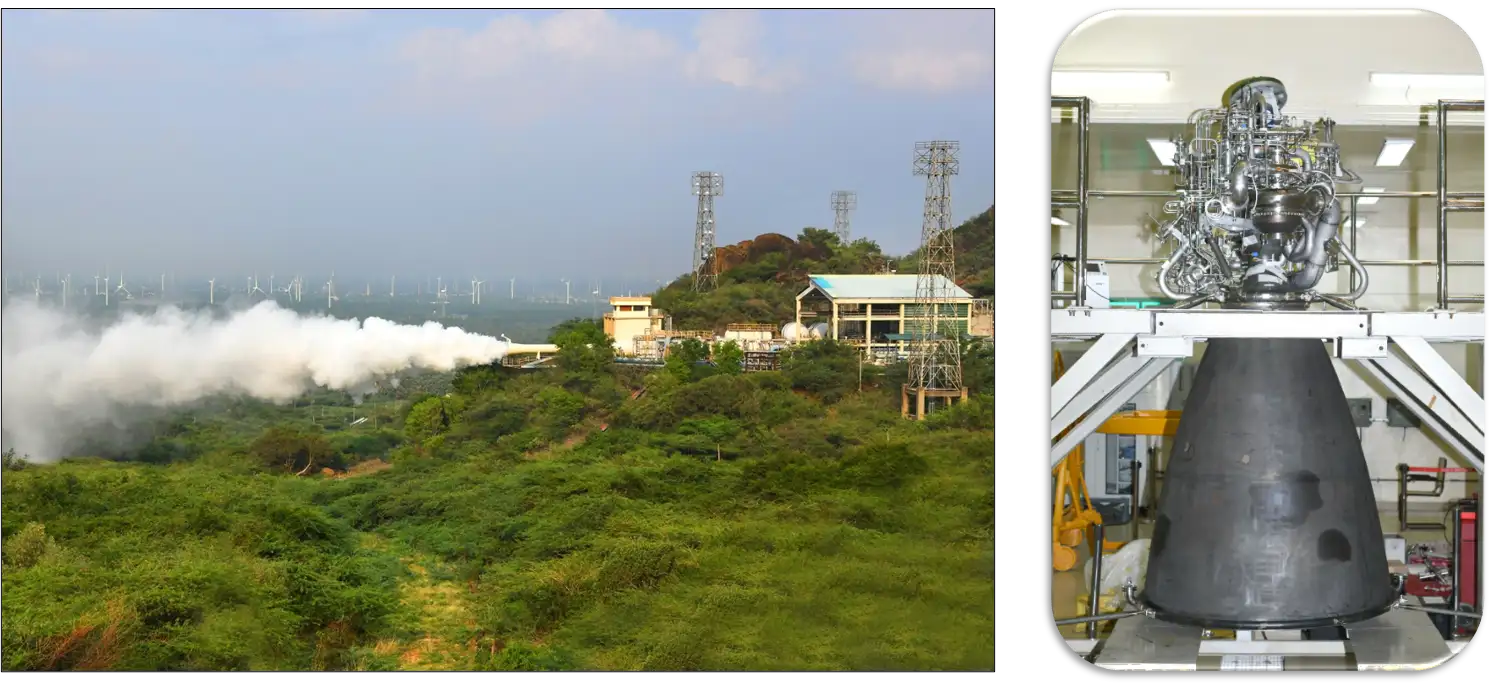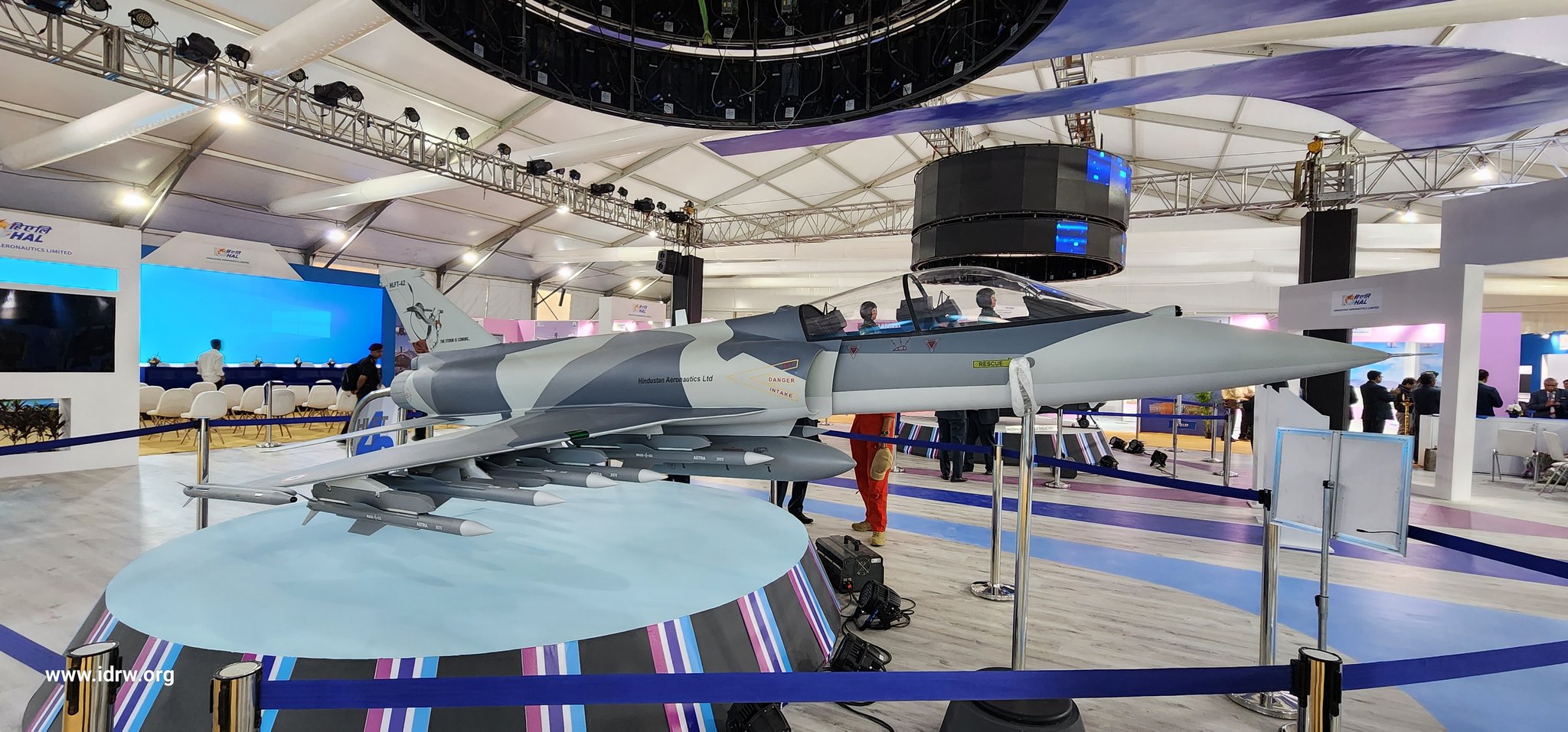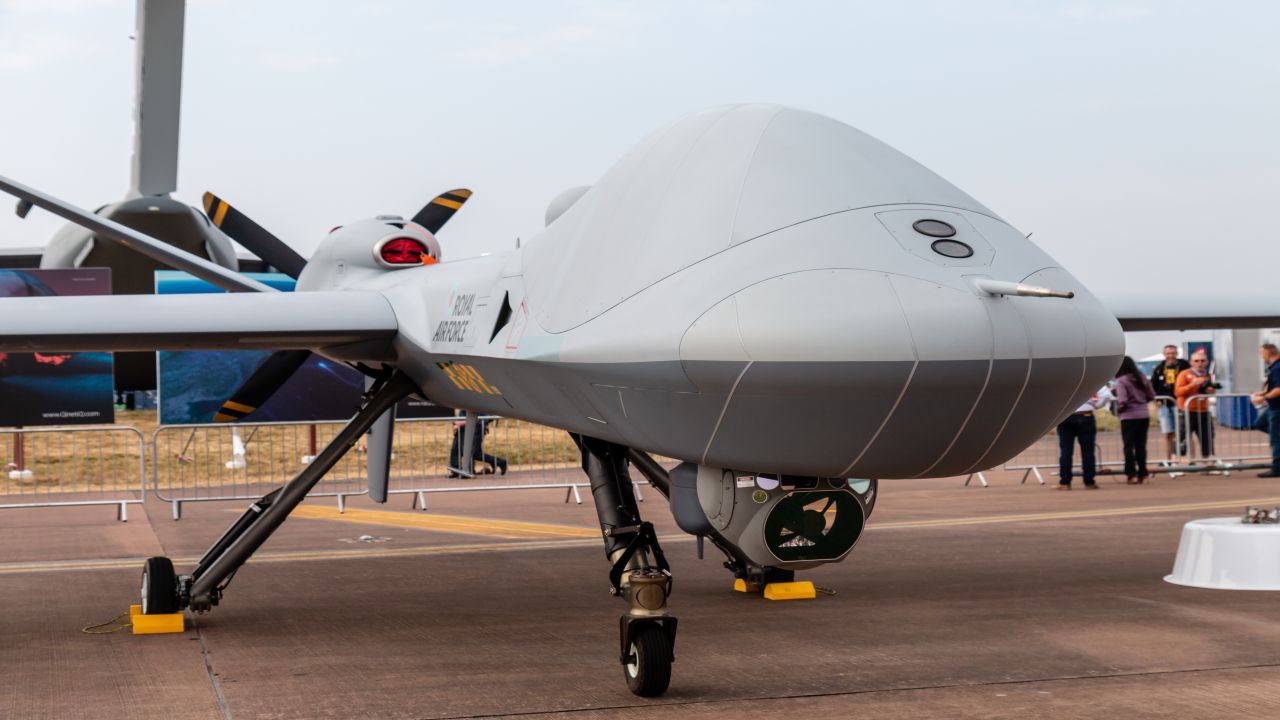SOURCE: IDRW.ORG

India’s state-owned Hindustan Aeronautics Limited (HAL) has confirmed receiving a Request for Proposal (RFP) from the Ministry of Defence (MoD) for the procurement of 156 Light Combat Helicopter (LCH) Prachand attack helicopters.
This significant development comes after the Indian Army raised its first attack squadron equipped with LCHs in Bangalore on June 1, 2022. The plan is to establish a total of seven squadrons, each with ten helicopters. The Indian Air Force (IAF) also formally inducted the Prachand into its fleet at the 143 Helicopter Unit at Jodhpur Air Force Station on October 3, 2022.
Continue readingSOURCE: IDRW.ORG.

By 2030-31, the Indian Air Force (IAF) will begin the phased retirement of nearly 60 Jaguar aircraft configured with the DARIN-II avionics suite. This significant transition marks the beginning of the end for these aircraft, which have been in service since the late 1970s. The retirement process will commence in 2028 as the IAF starts phasing out older batches acquired through a historic deal signed in 1978. This $1 billion agreement with SEPECAT, an Anglo-French company, facilitated the procurement of 160 Jaguars, with the first 40 delivered in a flyaway condition.
Currently, the IAF is the only operator of the Jaguar aircraft in the world. The fleet is distributed across six squadrons, with 20 fighters each, stationed in Ambala, Jamnagar, and Gorakhpur. Known for their role as “deep penetration strike aircraft,” the Jaguars have been a cornerstone of the IAF’s strategic capabilities for decades.
Continue readingSOURCE: AFI

French aerospace giant Dassault Aviation is taking its Rafale fighter jet program to new heights. The company is gearing up to increase production from two to three jets per month in response to a surge in global demand.
This news comes courtesy of Le Tribune, a French newspaper, which reported CEO Eric Trappier’s ambitious plans. Trappier highlighted the company’s significant turnaround, stating, “We are moving from less than one unit in 2020, which was critical, to three units. Currently, we are at two units.”
Continue readingSOURCE: AFI

The Indian Army’s recent selection of the ASMI submachine gun (SMG) over the well-established Israeli Uzi marks a significant milestone for indigenous Indian defense manufacturing. Let’s delve into the factors that led to ASMI’s triumph and explore the key features of both weapons.
The ASMI, meaning “pride, self-respect, and hard work,” is a 9x19mm caliber SMG designed and developed in 2020 by the Armament Research and Development Establishment (ARDE) and Lt Col Prasad Bansod.
Continue readingSOURCE: AFI

The Indian Air Force (IAF) has returned triumphantly from the recently concluded Red Flag exercise, a premier aerial combat training event hosted by the United States Air Force (USAF) in Alaska. This year’s edition, held from June 4th to 14th at Eielson Air Force Base, saw the IAF’s Rafale fighters emerge as clear standouts.
The IAF Rafales engaged in simulated long-range Beyond-Visual-Range (BVR) missions, facing off against US F-16s and Singaporean F-16s. Reports indicate that the Rafales emerged with the upper hand in these BVR encounters, showcasing their advanced capabilities.
Continue readingSOURCE: AFI

Agnikul Cosmos, a private space company incubated at IIT Madras, is setting its sights on the stars. After successfully test-firing its first rocket on May 30, the company is now aiming for a lofty goal: 35-40 commercial launches per year in the coming years.
This achievement marks a significant milestone for the Indian space industry. Agnikul Cosmos becomes the second private Indian company to successfully test a rocket, and remarkably, the first to launch from its own private pad.
Continue readingSOURCE: AFI

The Indian Institute of Chemical Technology (IICT) in Hyderabad, along with Premier Explosives, has achieved a breakthrough in propellant technology for rockets and missiles. The collaboration resulted in an indigenous process for a key material used in the preparation of CL-20 propellant.
CL-20 is a high-energy material prized for its superior performance compared to conventional propellants. It boasts a better oxidizer-to-fuel ratio than RDX and delivers 20% more energy than HMX-based propellants, translating to increased efficiency and range for rockets and missiles.
Continue readingSOURCE: RAUNAK KUNDE / NEWS BEAT / IDRW.ORG

Dr. Samir V. Kamat, Secretary DD(R&D) and Chairman of the Defence Research and Development Organisation (DRDO), recently announced a significant milestone in India’s aviation capabilities. The country’s ambitious 5th-generation fighter jet program is expected to be ready for production by 2033-34, with induction into the Indian Air Force (IAF) slated for 2035 onwards.
The Advanced Medium Combat Aircraft (AMCA) is set to be India’s next-generation fighter jet, a considerable leap ahead of the current Tejas MkII and Mk1A. The AMCA program promises to bring a host of advanced technologies and capabilities to the IAF, positioning India among the few nations capable of developing and deploying 5th-generation fighters.
Continue readingSOURCE: RAUNAK KUNDE / NEWS BEAT / IDRW.ORG

India’s Defence Research and Development Organisation (DRDO) is planning further tests of the SAAW-V2, an indigenously developed smart weapon. The SAAW-V2 is a 120 kg class, a high-precision weapon designed to engage ground targets at a range of up to 100 kilometres. According to a Ministry of Defence (MoD) statement released in New Delhi, the weapon successfully underwent two different configurations based on satellite navigation and electro-optical sensors in 2021.
This previous round of testing marked a significant milestone, as it included the country’s first-ever electro-optical seeker-based flight test for a bomb of this class. The electro-optic sensor itself is another testament to India’s growing Indigenous defence capabilities.
Continue readingSOURCE: RAUNAK KUNDE / NEWS BEAT / IDRW.ORG

The Philippine Air Force (PAF) is prioritizing the Saab Gripen E and the American F-16 V Viper in its selection process to acquire up to 12 new fighter jets. This comes with a total budget of 61.2 billion pesos (US$1.04 billion) allocated for the modernization program expected to run from 2023 to 2027.
The shortlisted options are the Gripen E from Saab and the F-16 V offered by Lockheed Martin. The fate of the offer made by India’s Hindustan Aeronautics Limited (HAL) for its Tejas MkIA remains unclear. HAL has not yet provided an official comment on this development.
Continue readingSOURCE: AFI

The Indian Ministry of Defense is gearing up to significantly strengthen the country’s air defense capabilities with the acquisition of nearly 5,000 “Vajra” Air Defense Systems. Developed indigenously by the Defense Research and Development Organization (DRDO), this system promises to be a game-changer, offering several key advantages.
The Vajra, which stands for Very Short Range Air Defense System (VSHORADS), is designed to effectively neutralize a range of aerial threats including enemy aircraft, drones, and helicopters. A significant advantage of the Vajra lies in its cost-effectiveness. Being domestically produced, it offers a powerful defense solution without straining the budget.
Continue readingSOURCE: AFI

Hindustan Aeronautics Limited (HAL) unveiled its HLFT-42 (Hindustan Lead-in Fighter Trainer) design at Aero India 2023, generating a wave of mixed reactions. The single-engine aircraft, adorned with a symbolic image of Maruti, the Hindu God of wind, promised a blend of training capabilities and combat prowess. However, several aspects of the design raise questions about its overall strategy.
The HLFT-42 evokes the HF-24 Marut, a past HAL project. While the Marut spirit of power and agility is commendable, some argue that a 4.5-generation trainer envisioned for 2030 or later seems like a niche concept for pure pilot training. This begs the question: is the HLFT-42 truly a fighter trainer, or a trainer with light combat ambitions?
Continue readingSOURCE: AFI
.jpg)
In 2012, Russia proposed selling several long-range Tupolev Tu-22M3 bombers to India, as part of a comprehensive military package that included the leasing of two Akula-class nuclear submarines and the acquisition of the aircraft carrier ‘Admiral Gorshkov’. Although the deal ultimately fell through due to financial considerations, the implications of such an acquisition by the Indian Navy would have been profound, particularly in the strategic context of the Indian Ocean Region (IOR).
The Tupolev Tu-22M3, also known as the Backfire-C, is a supersonic, long-range bomber capable of delivering significant payloads over vast distances. With a range of up to 7,000 kilometers and the capacity to carry three Kh-22 cruise missiles, the Tu-22M3 serves as a formidable platform within the Russian Air Force and Navy. Despite Russian assertions that the Tu-22M3 is “not a strategic” weapon, its operational capabilities suggest otherwise. The bomber’s ability to strike targets far from home bases, coupled with its high speed and payload, would have dramatically enhanced India’s strategic reach.
Continue readingSOURCE: AFI

India’s Defence Research and Development Organisation (DRDO) is making strides in improving the mobility of its Vertical Launch Short Range Surface-to-Air Missile (VLSRSAM) launcher. This involves crucial modifications to certain subsystems with the aim of weight reduction.
The VLSRSAM is a state-of-the-art air defense system designed to counter low-altitude aerial threats like aircraft, drones, and cruise missiles. It utilizes vertical launch technology, allowing for rapid deployment and launch from mobile platforms.
Continue readingSOURCE: IDRW.ORG.

The Biden administration has taken a key step forward in finalizing a major defense deal with India. Following earlier approval, they have formally notified the US Congress of the possible sale of 31 MQ-9B armed drones to India. This notification formally initiates the congressional review process, paving the way for a final agreement later this year.
The proposed deal, estimated to be worth around $3 billion, is a significant boost to India’s defense capabilities. The MQ-9B Predator drones are known for their long-endurance flights (over 35 hours) and ability to carry a variety of weapons. This acquisition will significantly enhance India’s ability to conduct surveillance and reconnaissance missions, particularly along its disputed border with China, the Line of Actual Control (LAC).
Continue reading